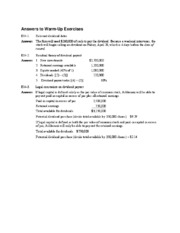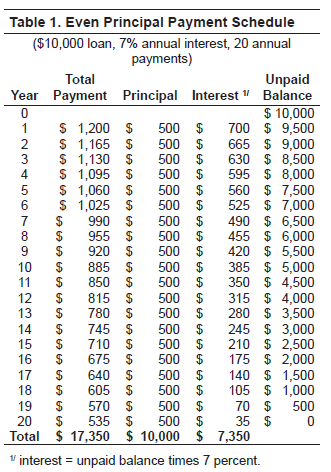What Are the Audit Assertions? Definition, Types, And Explanation

However, knowing what these assertions are and what an auditor will be looking for during the audit process can go a long way toward being better prepared for one. For example, accounts payable notes payable and interest payable are all considered payables, but they are all very separate entities and should be reported as such. For example, notes payable transactions should never be classified as an accounts payable transaction, with the same being true for interest payable transactions. Auditors may look at other assets as well to determine whether they are the property of the business or are just being used by the business. Liabilities are another area that auditors will review to determine that any bills paid from the business belong to the business and not the owner. For example, an auditor may want to examine payroll records to make sure that all salaries and wages expenses have been recorded in the proper period.
You must make sure everything has been properly written, on time, and where is supposed to be. IFRS developed ISA315, which includes categories and examples of assertions that may be used to test financial records. The entity holds or controls the rights to assets, and liabilities are the entity’s obligations. Amounts and other data relating to recorded transactions and events have been recorded appropriately.
Audits don’t have to be scary
Put simply, the company confirms that it has legal authority and control of all the rights (to assets) and obligations (to liabilities) highlighted in the financial statements. When a company’s financial statements are audited, the principal element an auditor reviews is the reliability of the financial statement assertions. That’s because there is no other way to hold the preparers of financial statements accountable.
“Anti-ESG” investment firm hit with lawsuits – InvestmentNews
“Anti-ESG” investment firm hit with lawsuits.
Posted: Mon, 21 Aug 2023 10:47:12 GMT [source]
Management assertions are claims made by members of management regarding certain aspects of a business. The concept is primarily used concerning auditing a company’s financial statements, where the auditors rely upon various assertions regarding the business. Thus, as auditors, we have responsibilities to perform suitable auditing procedures in order to provide the evidence necessary to persuade that there is no material misstatement related to each of the relevant assertions in the financial statements. Whether you’re with a Fortune 500 company, a nonprofit, or are a small business owner, any time you prepare financial statements, you are asserting their accuracy. Audit assertions, also known as financial statement assertions or management assertions, serve as management’s claims that the financial statements presented are accurate.
Overview: What are audit assertions?
Auditors may also directly contact the bank to request current bank balances. 8AS 2510, Auditing Inventories, establishes requirements regarding observation of the counting of inventory. The following is a good explanation of the financial assertions as the pertain to ISA 135. The Oxford dictionary defines an assertion as “a confident and forceful statement of fact or belief.” Making an assertion is often used synonymously with stating an opinion or making a claim. 12/ If misstatements are identified in the selected items, see paragraphs and paragraphs of Auditing Standard No. 14.
Psychological Safety: Minimizing The Silent Enemies Of A Thriving Team – Forbes
Psychological Safety: Minimizing The Silent Enemies Of A Thriving Team.
Posted: Mon, 21 Aug 2023 20:28:02 GMT [source]
To accomplish this, audit tests are created to address general audit objectives. Exhibit 7-2 summarizes the relationship between management assertions and general audit objectives for a financial statement audit. The Sarbanes-Oxley Act (SOX), issued in 2002, added additional responsibility to the management of publicly traded companies. Management of these corporations was now required to assess and assert as to the effectiveness of the organization’s internal controls over financial reporting. Consequently, in addition to assessing the presentation of an organization’s financial statements, auditors must evaluate the internal controls within the processes that could materially impact the financial statements.
Valuation
Many professionals review and test the authenticity of this assertion by using certain checklists. This helps ensure that the financial statements in question comply with accounting standards and regulations. For example, any statement of inventory included in the financial statement carries the implicit assertion that such inventory exists, as stated, at the end of the accounting period. The assertion of existence applies to all assets or liabilities included in a financial statement.

Unless you’re an auditor or CPA, you’ll never have to worry about testing audit assertions, and if you continue to enter financial transactions accurately, you won’t have much to worry about during the audit process. When performing an audit, it is the auditor’s job to obtain the necessary evidence to verify the assertions made in the financial statements. Whether you’re using accounting software or recording transactions in multiple ledgers, the audit assertion process remains the same. The concept is primarily used in regard to the audit of a company’s financial statements, where the auditors rely upon a variety of assertions regarding the business. The auditors test the validity of these assertions by conducting a number of audit tests. Rights and obligations assertions are used to determine that the assets, liabilities, and equity represented in the financial statements are the property of the business being audited.
Understanding Audit Assertions and Why They’re Important
Audit tests developed for an audit client are documented in an audit program. Management assertions are accounting statements that management makes about their organization’s finances. This can include assertions about assets, liabilities, equity, revenue, and expenses. Management assertions help provide transparency into an organization’s financial status and give stakeholders confidence in the numbers that are being reported. It is the third assertion type that can fall under both transaction-level assertions and account balance assertions. The assertion of rights and obligations is a basic assertion that all assets and liabilities included in a financial statement belong to the company issuing the statement.
The Financial Accounting Standards Board (FASB) establishes accounting standards in the United States. These are regulations that companies must follow when preparing their financial statements. The FASB requires publicly traded companies to prepare financial statements following the Generally Accepted Accounting Principles (GAAP). If the auditor is unable to obtain a letter containing management assertions from the senior management of a client, the auditor is unlikely to proceed with audit activities. One reason for not proceeding with an audit is that the inability to obtain a management assertions letter could be an indicator that management has engaged in fraud in producing the financial statements. Management assertions can be made explicitly in financial statements or footnotes, or they can be implied through the overall tone and presentation of the statements.

Management assertions (also known as financial statement assertions) refer to the implicit or explicit assertions of the one responsible for preparing the financial statements, usually management. It includes the recognition, measurement, presentation, and disclosure of the financial information inside the statements. Management assertions are usually used for the audit of a company’s financial statements.
Some people may refer to these as audit assertions as they are evaluated during an audit of an entity’s financial statements. Auditors will employ a wide variety of procedures to test a company’s financial statements with respect to each of these assertions. Financial Management assertions statement assertions are claims made by companies that attest that the information on their financial statements is true and accurate. Information related to the assertions is found on corporate balance sheets, income statements, and cash flow statements.
Likewise, we usually use these assertions to assess external financial reporting risks. The auditor must plan and perform audit procedures to obtain sufficient appropriate audit evidence to provide a reasonable basis for his or her opinion. This standard explains what constitutes audit evidence and establishes requirements regarding designing and performing audit procedures to obtain sufficient appropriate audit evidence. There are generally five accounting assertions that the preparers of financial statements make. They are accuracy and valuation, existence, completeness, rights and obligations, and presentation and disclosure. There are five different financial statement assertions attested to by a company’s statement preparer.
Using Information Produced by the Company
Isaac specializes in and has conducted numerous SOC 1 and SOC 2 examinations for a variety of companies—from startups to Fortune 100 companies. Isaac enjoys helping his clients understand and simplify their compliance activities. He is attentive to his clients’ needs and works meticulously to ensure that each examination and report meets professional standards. Accuracy & Valuation Assertion – Transactions, events, balances, and other financial matters have been disclosed accurately at their appropriate amounts.

Auditing Standard No. 3, Audit Documentation, establishes requirements regarding documenting the procedures performed, evidence obtained, and conclusions reached in an audit. This is the assertion that all appropriate information and disclosures are included in a company’s statements and all the information presented in the statements is fair and easy to understand. This assertion may also be categorized as an understandability assertion.
- Management assertions help provide transparency into an organization’s financial status and give stakeholders confidence in the numbers that are being reported.
- It is the third assertion type that can fall under both transaction-level assertions and account balance assertions.
- A service organization with a number of public clients or user organizations could be inundated with audit requests by user auditors attempting to audit their process to gain comfort on their customers’ assertions over internal controls.
- This is particularly important for those accruing payroll or reporting inventory levels.
- In other words, if your small business is being audited, the auditor may ask for proof that the cash balance of your bank account belongs to the business.
Each also provides the assertion meaning or definition to help one understand how each is used in an assessment. Account balance assertions apply to the balance sheet items, such as assets, liabilities, and shareholders’ equity. Since financial statements cannot be held to a lie detector test to determine whether they are factual or not, other methods must be used to establish the truth of the financial statements. Appropriateness is the measure of the quality of audit evidence, i.e., its relevance and reliability. To be appropriate, audit evidence must be both relevant and reliable in providing support for the conclusions on which the auditor’s opinion is based. This financial assertion states that the different components of a financial statement, such as assets, liabilities, revenues, and expenses, have all been properly classified within the statement.
11/ AU sec. 329, Substantive Analytical Procedures, establishes requirements on performing analytical procedures as substantive procedures. 9/ AU sec. 333, Management Representations, establishes requirements regarding written management representations, including confirmation of management responses to oral inquiries. There’s a lot of repetition between the different assertions, but that’s because of how important management assertion is.
